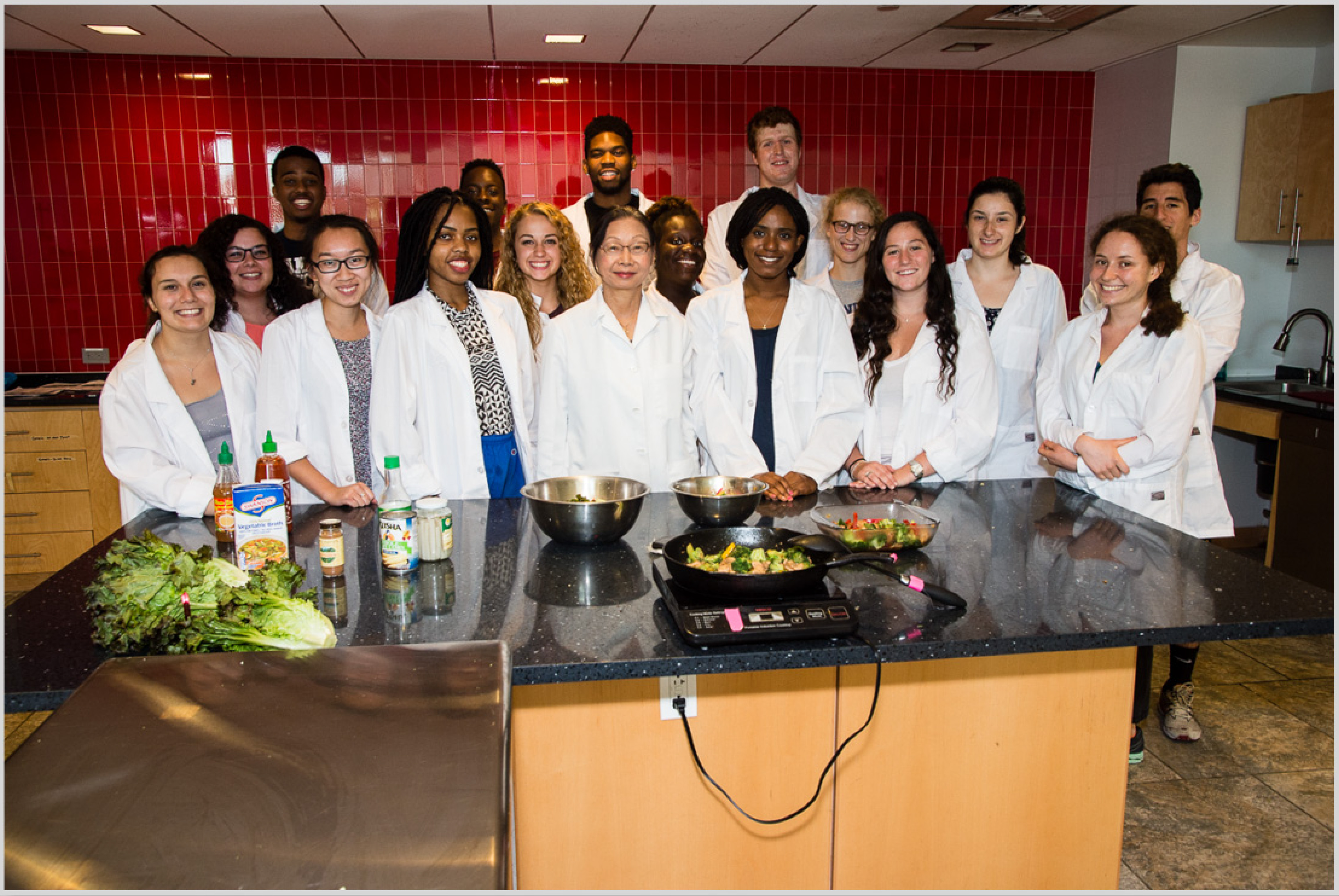Elaine Lai
 Senior Lecturer and Senior Scientist in Biology
Senior Lecturer and Senior Scientist in Biology
Research Description
Gene expression, cell differentiation and programmed cell death
As a graduate student at Brandeis, I became interested in the differentiation of the single-celled eukaryote Naegleria gruberi, which changes from a gliding amoeba to a swimming flagellate with two flagella, a major phenotypic change which can occur synchronously within 1-1.5 hours. Initially I focused on using the then-new techniques of molecular biology to dissect the programmed transcription and translation of components of the flagella during this differentiation. In particular, I was able to use quantitative cell-free translation to show that mRNA for flagellar tubulin was undetectable in amoebae, increased in quantity during differentiation, and then rapidly declined (Lai et al., 1978). Subsequent work led to cloning of these genes and obtaining first insights into their regulation during differentiation (e.g., Lai et al., 1988, Fulton et al., 1995). Currently my research on Naegleria, in collaboration with Dr. Chandler Fulton and with New England Biolabs, is focused on DNA transformation-induced gene silencing in Naegleria, an epigenetic process that involves gene methylation.

Our research with Naegleria in the Fulton-Lai laboratory also led us to discover a Naegleria agent that induces generation-delayed apoptosis in vertebrate cells. The agent induces death of vertebrate cells under conditions that often cause current cancer chemotherapies to fail. It induces cell death whether the cells are proliferating or quiescent, and it does not matter whether they are expressing the anti-apoptotic Bcl-2 genes or the p53 tumor-suppressor gene. Many cells in solid tumors are quiescent, lack p53, and/or express Bcl-2. We traced the apoptotic agent to Naegleria thiaminase I, an enzyme that degrades thiamin — vitamin B1 — the "energy vitamin." Thiaminase induces apoptosis by cleaving thiamine and causing an intracellular thiamin deficiency that triggers death. The properties of this agent offer provocative possibilities for tissue-targeted cancer therapy, and our discovery is covered by three patents (#6,506,550, #7,736,898, #7,803,531). We have also collaborated on a study of the structure and properties of the Naegleria thiaminase (Kreinbring et al., 2014).
I have become very interested in teaching about diet, lifestyle and health, and teach courses for both biology majors and non-majors. My interest in nutrition has also led to an interest in diabetes, a chronic metabolic disease that can often be prevented by lifestyle changes that include diet and exercise. Type 2 diabetes is rapidly reaching epidemic proportions in the United States and worldwide. This combined interest led me to propose, beginning in 2013, a new Justice Brandeis Semester that focuses on all these topics, that includes a food lab, site visits, classroom learning, and student-driven research and presentations, and is especially directed toward students majoring in Health: Science, Society and Policy. I am very interested to continue to explore via JBS an approach to teaching that combines interactive classroom learning with hands-on experience coupled with an emphasis on teamwork to teach "diabetes and its implications" through a lens framed in real-world perspectives.
Brandeis Magazine (Summer 2011 edition) profiled the teaching in my 2011 BIOL 55B.
In March 2014, Brandeis Now also profiled the Food, Lifestyle and Health JBS program.

- Rapid Centriole Assembly in Naegleria Reveals Conserved Roles for Both De Novo and Mentored Assembly. Fritz-Laylin LK, Levy YY, Levitan E, Chen S, Cande WZ, Lai EY, Fulton C. Cytoskeleton. 2016 Mar;73(3):109-16.
- Structure of a eukaryotic thiaminase I. Kreinbring CA1, Remillard SP, Hubbard P, Brodkin HR, Leeper FJ, Hawksley D, Lai EY, Fulton C, Petsko GA, Ringe D. Proc Natl Acad Sci U S A. 2014 Jan 7;111(1):137-42.
- A flagellar calmodulin gene of Naegleria, coexpressed during differentiation with flagellar tubulin genes, shares DNA, RNA, and encoded protein sequence elements. Fulton C, Lai EY, Remillard SP. J Biol Chem. 1995 Mar 17;270(11):5839-48.
- The alpha-tubulin gene family expressed during cell differentiation in Naegleria gruberi. Lai EY, Remillard SP, Fulton C. The Journal of Cell Biology.1988;106(6):2035-2046.
- Programmed appearance of translatable flagellar tubulin mRNA during cell differentiation in Naegleria. Lai EY, Walsh C, Wardell D, Fulton C. Cell. 1979 Aug;17(4):867-78.